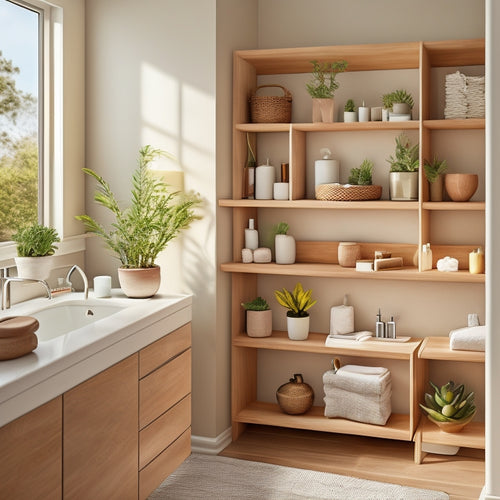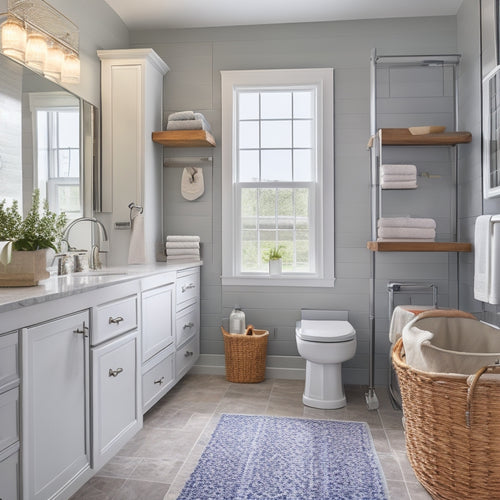
Discover the Harmony of Singing Bowls
Share
Singing bowls have been revered for centuries as a sacred tool for cultivating harmony, balance, and inner peace, their rich, resonant tones awakening the mind, body, and spirit to a deeper state of consciousness. Originating in the Himalayas over 2,500 years ago, these ancient instruments have been used in Tibetan Buddhist meditation and spiritual practices to facilitate healing and self-awareness. As sound healing therapy, singing bowls harness healing vibrations, promoting holistic well-being and restoring balance within. By embracing the harmony of singing bowls, individuals can start on a profound journey of self-discovery, and as they listen, they will begin to uncover the secrets of this ancient, sacred art.
Key Takeaways
• Singing bowls originated in the Himalayas over 2,500 years ago, playing a crucial role in Tibetan Buddhist meditation and spiritual practices.
• They possess healing properties, facilitating a deeper state of consciousness, and are used in sound healing therapy to promote holistic well-being.
• The vibrations from singing bowls work on a cellular level, calming the mind and balancing the body's energy to restore inner harmony.
• Different types of singing bowls, made from materials like bronze, crystal, or Himalayan metals, produce unique tones and energies, contributing to a diverse sonic landscape.
• Sound baths using singing bowls offer a profound opportunity for individuals to sync their inner rhythms, fostering relaxation, balance, and unity.
The History of Singing Bowls
Originating in the Himalayan region over 2,500 years ago, singing bowls have been an essential part of Tibetan Buddhist meditation and spiritual practices. Their rich, resonant tones are believed to possess healing properties and facilitate a deeper state of consciousness. This ancient tradition has been passed down through generations, with singing bowls playing a crucial role in cultural and spiritual rituals.
The origin of singing bowls is deeply rooted in Tibetan culture, symbolizing unity, harmony, and spiritual growth. Their cultural significance extends beyond mere musical instruments, as they are revered for their ability to awaken the mind, body, and spirit. As a sacred tool, singing bowls continue to inspire a sense of community and belonging among those who practice their ancient art.
Benefits of Sound Healing Therapy
As the rich, resonant tones of singing bowls continue to awaken the mind, body, and spirit, their therapeutic benefits have been increasingly recognized, and sound healing therapy has emerged as a powerful tool for promoting holistic well-being. This ancient practice, rooted in ancient traditions, harnesses the healing vibrations of singing bowls to restore balance and harmony within.
How Singing Bowls Work
The rich, resonant tones of singing bowls are produced by the friction of a mallet or striker circling the bowl's rim, stimulating the metal alloy to vibrate and emit a unique, harmonious sound. This vibration creates a meditative atmosphere, perfect for relaxation and sound therapy. The vibrations of the singing bowls work on a cellular level, calming the mind and balancing the body's energy.
| Aspect | Effect | Benefit |
|---|---|---|
| Vibration | Stimulates cellular healing | Promotes relaxation |
| Sound Waves | Calms the mind | Reduces stress |
| Harmonics | Balances energy | Enhances well-being |
| Resonance | Connects with inner self | Fosters self-awareness |
| Frequency | Aligns with natural rhythms | Encourages spiritual growth |
Types of Singing Bowls Used
In the domain of sound healing, practitioners often employ a diverse range of singing bowls, each with its unique characteristics, tones, and energies, to create a rich tapestry of therapeutic experiences.
The selection of singing bowls is guided by their materials, which can include bronze, crystal, or Himalayan metals, each imbuing the bowl with distinct properties. Different bowl sizes also contribute to the diverse sonic landscape, from the deep, resonant tones of larger bowls to the higher, more agile pitches of smaller ones.
Singing bowl designs, too, hold cultural significance, with intricate engravings and symbols often reflecting the bowl's origins and intended use. By thoughtfully selecting and combining these elements, practitioners can craft a bespoke sound healing experience that resonates deeply with the individual.
Finding Harmony in Sound Baths
Harmonious sound baths, carefully crafted by skilled practitioners, offer a profound opportunity for individuals to sync their inner rhythms with the symphony of singing bowls, fostering a deep sense of relaxation, balance, and unity.
As participants lie down, surrounded by the resonant tones, they begin a journey of self-discovery, letting go of stress and anxiety. Sound therapy benefits are numerous, including reduced inflammation, improved mood, and enhanced cognitive function.
Frequently Asked Questions
Can I Use Singing Bowls if I Have a Pacemaker or Implant?
Ensuring the safety of all participants, obtaining medical clearance before participating in singing bowl sessions is crucial. Electronic interference may arise, so it is important to prioritize a harmonious and safe experience for everyone involved.
How Long Does a Typical Sound Bath Healing Session Last?
A typical sound bath healing session can last anywhere from 30 minutes to 2 hours, depending on the practitioner and the specific healing intentions, with the average session duration being around 60-90 minutes, allowing for a profound healing timeframe.
Are Singing Bowls Suitable for Children and Pregnant Women?
Like a gentle rain soothing the earth, singing bowls can nurture tender souls. Children can benefit from sound healing, enhancing their emotional intelligence and cognitive development. Pregnant women can foster fetal bonding, promoting a sense of calm and connection with their unborn child.
Can I Attend a Sound Bath if I Have a Hearing Impairment?
"Yes, individuals with hearing impairments can attend sound baths. Many facilitators accommodate accessibility by utilizing assistive devices or making sound modifications, ensuring an inclusive and immersive experience for all participants."
Do I Need to Bring My Own Singing Bowl to a Sound Bath Event?
As you commence on this sonic journey, rest assured that bringing your own singing bowl is not necessary; event logistics typically provide the necessary instruments, upholding bowl etiquette, allowing you to simply surrender to the harmonious experience.
Related Posts
-

Space-Saving Bathroom Shelves With Open Design
Space-saving bathroom shelves with an open design can convert your compact space into a stylish sanctuary. By maximiz...
-

Transform Your Bathroom With Clever Storage Hacks
Elevate your bathroom's functionality and style with clever storage hacks. Maximize space by utilizing the back of th...
-

Get Organized: Free Pantry Labels + More
I've learned the hard way that organization comes before labeling - a cluttered pantry with labels can actually look ...


